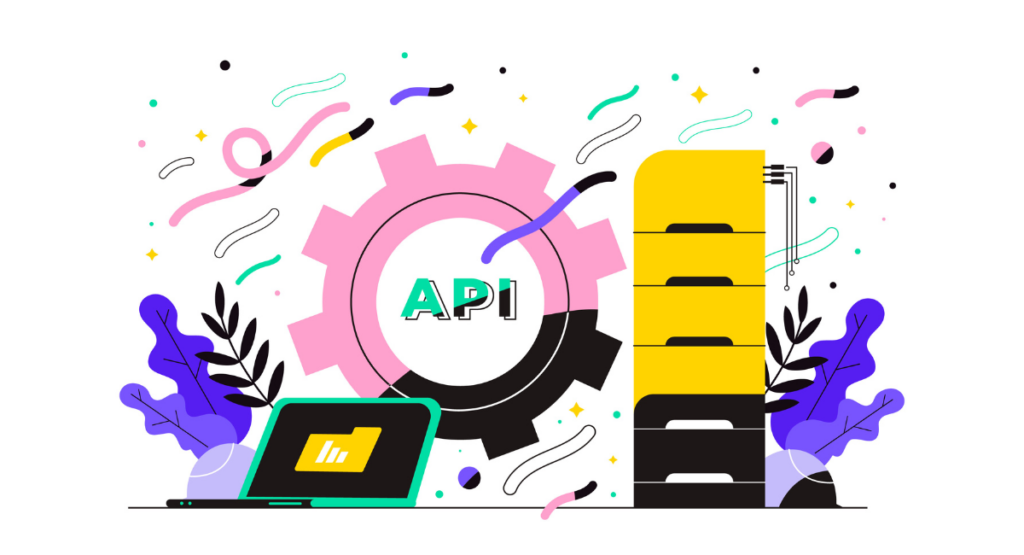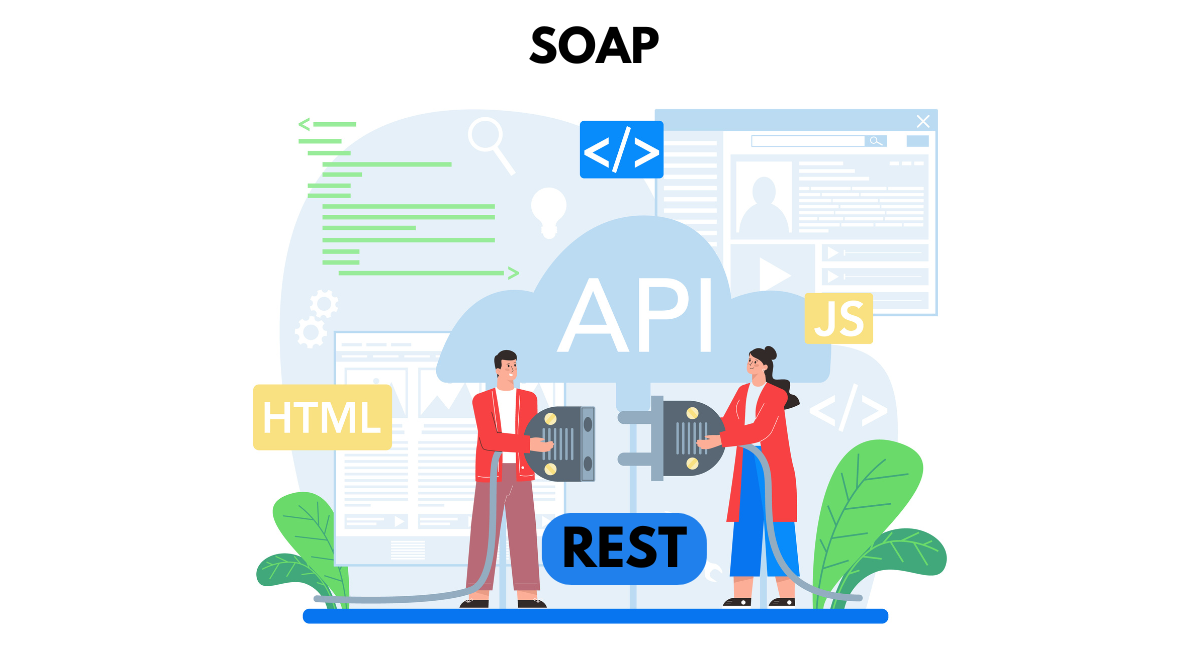API testing is a crucial part of any software development lifecycle. It can be done directly on the APIs, or it can be tested via integration testing to check if the APIs behave as expected in terms of functionality, reliability, performance, and security.
For those just starting with APIs and testing, little more than a steep learning curve is presented either by a SOAP or REST service. But, with the proper approach and understanding, it emerges as an efficient strategy to ensure that your software is communicating and functioning as it should.
This blog will outline some practical tips that will help beginners approach SOAP and REST API testing in the right direction.
Understanding SOAP and REST APIs

Overview of SOAP APIs
Simple Object Access Protocol is a specification of the protocol for exchanging structured information in the implementation of web services in computer networks.
It is based on the use of XML to encode the data with HTTP or SMTP used for transporting messages. These APIs are found to be highly secure, supported by a myriad of standards body and perform effectively in distributed enterprise environments.
A SOAP message structurally will typically consist of having an envelope that resembles encapsulates a header and the body to enclose the information to be sent, hence making it flexible and strong.
Overview of REST APIs
Representational State Transfer also happens to be one of the approaches well used in the development of web services. REST APIs are structured entirely on the application of regular HTTP protocols and are easy to use, simple, and lightweight.
Unlike SOAP, REST does not require proprietary protocols, but it applies standard URLs to access the resources with its operations being carried through standard HTTP methods that include GET, POST, PUT, and DELETE.
Data can be formatted in many different ways. Among them is JSON JavaScript Object Notation. It is much lighter than the XML used in SOAP, making REST a very scalable option in the development of the web API. It is widely used in mobile applications and IoT solutions.
Importance of API Testing
Ensuring functionality
API testing is focused on ensuring that the APIs function as intended. It means sending requests into the API, assessing responses, and asserts that the correct data is returned by the API as needed, covered by the tests targeting to address the identified needs.
Functional tests are quite important in finding gaps in behavior and errors between the SOAP and REST APIs, therefore preventing the passage of these bugs to clients or, worse, to end-users.
It is in this stage that the basic actions that the API is supposed to execute are tested to prevent erroneous releases.
Enhancing software performance
API performance testing is conducted to understand another way round how the API will perform when it faces the load, and how well it will perform in multiple environments to optimize performance.
Performance issue of any API can lead the application to be very slow, timeout, or even it can be worse. Some of the most fundamental aspects of API performance are the speed with which the data is responding and its reliability when there is a load on the API.
Can your API handle multiple request types?. Through consistent testing and monitoring, RESTful API ensures that applications remain fast and responsive, just like the SOAP, which does the same thing to ensure effective functionality of the APIs.
Securing APIs
Since the data being transmitted across the API is sensitive, security testing forms a crucial part of the overall API testing. There is a broad range of other features that need to be tested for authentication, authorization, data encryption, and access controls.
Some APIs deal with personal information and are therefore sensitive, so they can be exposed to security attacks. For instance, penetration testing is where testers simulate attacks coming from outside while in static analysis, the code of the API is checked for any possible weakness in security.
These are good reasons organizations should have their APIs undergo exhaustive security testing, for the maintenance of data and regulatory compliance provides a much safer space for critical user interaction.
Tips for Beginners in API Testing
Tip 1: Understanding API documentation
You really need to be conversant with the API documentation before you start any testing at all. Chances are that this documentation will include such critical information as what the API does and does not do, its endpoints, what each endpoint expects in the way of requests and the parameters each endpoint accepts.
You would also hope to find example requests and responses and error status codes, and perhaps even integration recommendations. Getting a good grip on these elements can make testing a lot easier as you will be less likely to miss relevant test cases.
Tip 2: Choosing the right testing tool
An appropriate selection of API testing tool forms the basis in determining how well tests can be carried out. There are a plethora of tools available, some are Postman, mostly used for REST APIs; SoapUI is used for SOAP APIs.
All these come with built-in features that assist in sending requests to the API receiving responses and automating the tests. Pick up the tool that works best with your API's protocol and is user-friendly to make your job less strenuous or more effective.
Tip 3: Establishing a testing environment
Setup a properly isolated testing environment emulating as much of your production environment as possible. Here you should really have all the initial testing done before any of the software is deployed.
Early on, this will catch all the discrepancies and try to avoid major issues when that API is deployed into a live environment.
Tip 4: Validating API responses
Check both the data accuracy and the HTTP status codes in the responses from your API. Make certain that the response data is in the correct format (e.g., JSON, XML) and that all necessary fields are returned correctly, especially under different scenarios.
Also, verify that appropriate HTTP status codes are returned for different outputs (e.g., 200 for success, 404 for not found) to ensure that your API handles errors and successes properly.
Tip 5: Managing API versioning
APIs often undergo various changes that require versioning. Managing different versions of an API can become complex. Always test backward compatibility of new API versions with existing applications.
Keep track of the changes in each API version and test extensively to ensure that these changes do not break any functionalities.
Tip 6: Testing for security vulnerabilities
From a security point of view, APIs are an important part as they often hold a vast amount of sensitive information and also are more often than not the weakest part of the security system of the applications.
Test for common security vulnerabilities such as SQL injection, XSS, or data exposure. Also, include authentication and authorization to make sure that the API securely restricts access to sensitive data.
Tip 7: Implementing automated testing
Automate your API testing process. This saves time and results in consistency. You can integrate your automated tests as part of continuous integration/continuous deployment.
Not only will that speed up the entire testing cycle, but you'll catch defects a whole lot earlier than in a purely manual process. You can add tools such as Jenkins - integrate them to your test suite - so that automated API tests are automatically triggered.
Tip 8: Monitoring API performance
Performance testing is a must to know how your API performs when subject to various level of stress and traffic. Make use of Tools which help in tracking the API's response time, error rate and Throughput.
Tracking the mentioned metrics helps a lot in spotting the bottlenecks in performance and can plan for capacity and Scalability.
Tip 9: Collaborating with developers
Effective collaboration between testers and developers is essential for successful API testing. Regularly communicate with developers to understand any changes in API implementation and share test results.
This cooperation can lead to faster resolution of issues and improvements in API quality.
Tip 10: Continuously learning and improving
Hence, API technologies and testing methodologies keep on changing. One should always be updated with the latest trends of API development and testing by reading articles, participating in forums, attending a workshop or conference.
Continuous learning will enhance your testing skill and will educate you about the best practice involved with API testing.
Best Practices in API Testing

Setting clear testing objectives
Before you start testing, define what you aim to achieve. Establish clear, measurable objectives for each test phase. This could involve ensuring functionality, security, performance, and reliability of the API. Clear objectives help prioritize tasks and guide your testing efforts toward critical areas.
Conducting thorough regression testing
Whenever an API is updated or modified, conduct regression testing to ensure that new changes haven’t adversely affected existing functionality. This helps maintain the stability of the API across different versions and updates.
Documenting test cases and results
Maintain comprehensive documentation of all test cases, including the objective of the test, the approach used, and the results obtained.
This documentation is crucial not only for validation and troubleshooting but also for any future modifications or audits. It ensures consistency in testing and enhances communication among team members.
Book a Demo and experience ContextQA testing platform in action with a complimentary, no-obligation session tailored to your business needs.
Conclusion
In the present era of digital development, the design and development of APIs, or Application Programming Interfaces, fuel modern scalable and efficient software systems.
For a new entrant into the API testing arena, this may all appear overwhelming at first, but with the proper paradigm and knowledge, it is much more controllable.
But, if one concentrates on some of the following strategies, such as reading the API documentation, starting with the easy or simple tests, leveraging automation where it is appropriate, and learning continuously, then it is really possible to become much more effective and efficient at this task of testing APIs.
Testing APIs, whether SOAP or REST, is not just about technical execution but also about understanding the business logic and maintaining communication between different software systems.
Every test carried out helps in uncovering potential discrepancies and in turn, boosts the overall software quality. Always remember, the goal of API testing is to ensure that the interaction between software systems is as smooth and reliable as possible.
Also Read - What is End-to-End Testing? E2E Testing Full Guide
